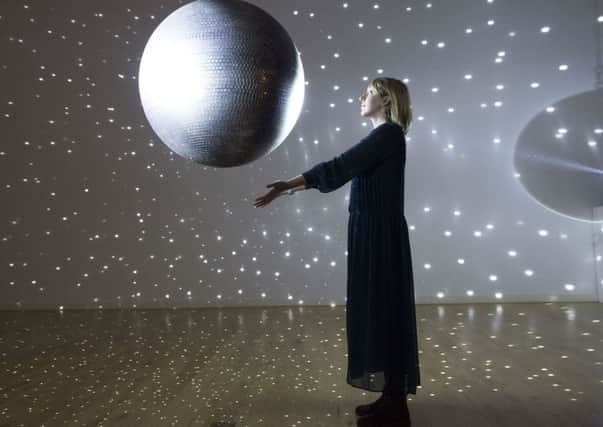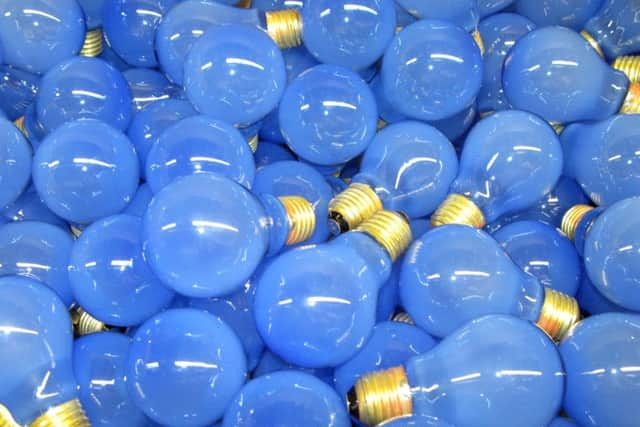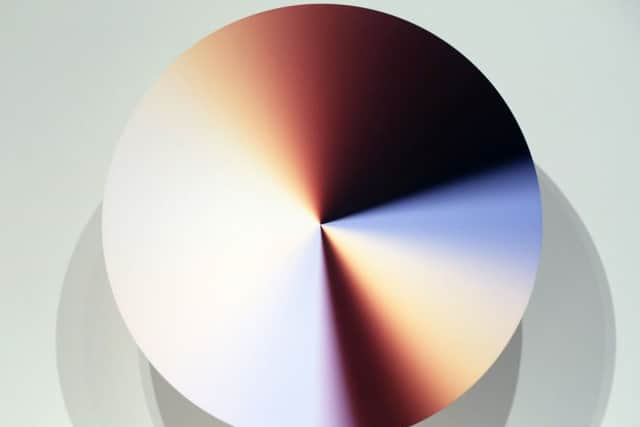Art review: NOW | Katie Paterson, Darren Almond, Shona Macnaughton and Lucy Raven, Scottish National Gallery of Modern Art, Edinburgh


NOW | Katie Paterson, Darren Almond, Shona Macnaughton and Lucy Raven, Scottish National Gallery of Modern Art, Edinburgh *****
The focus of this final NOW moment is Glasgow-born Katie Paterson, with the first major presentation of her work in Scotland. Like the celestial bodies she concerns herself with, Paterson’s work evolves slowly, and this show brings together projects from the last decade. Embracing ideas of cosmic scale and significance, she has developed quietly ingenious ways of fitting them inside our heads. Applying both rigorous research and rigorous conceptualism, she takes material which often appears closed and distant and cracks it open, finding not existential angst but a kind of wonder and poetry.
Advertisement
Hide AdAdvertisement
Hide AdThe last room of the show contains a spinning colour wheel first shown earlier this year at Turner Contemporary in Margate. Paterson has worked with scientists to establish, as far as is possible, the colours visible to the naked eye during the various ages of the earth, from the blinding light of the Big Bang to the beige of our current Stelliferous Era (christened “cosmic latte”) and the darkness which will end all darkness, some 100 trillion years hence. As it spins, it repeats the cycle of billions of years, each revolution in the blink of an eye.


Candle (from Earth to a Black Hole) does something similar with distance. A scented candle, made in collaboration with scientists and perfumers, takes us on an olfactory journey out through the solar system, past the moon (burnt almond cookie) and the sun (welding fumes) into outer space (raspberries and rum). This could be reductive but, somehow, it isn’t. Her work, at its best (and it is frequently at its best), condenses ideas the way poetry does, making them alive and significant in new ways.
There is an element of the obsessive collector about Paterson. She has made a map of all the dead stars, and an archive of images of darkness. Totality is a collection of images of solar eclipses, from medieval sketches through Victorian photography to the latest digital images, 10,000 of them made into a spinning disco ball which casts the bright shapes of half-formed suns onto the floor. It’s as if she’s brought something cosmic and distant right down to earth, and made it come alive again by filling it with a different kind of magic.
Light is very important to Paterson. One of the earliest works here is 2009’s Light Bulb to Simulate Moonlight, a collaboration with scientists and light bulb company Osram (entirely appropriately, in this show, we see it as strains of Beethoven’s Moonlight Sonata filter through from another work in the next room). But she hasn’t only made a light which feels like moonlight – bright, yet dim at the same time – she has made enough moonlight to last only for the duration of one average person’s life. The supply is finite; curators must log it each time they use it. Once again, she has made us think of time, making plain this eerie light’s natural connection to our morality.
Perhaps Paterson’s single most ambitious undertaking on the passing of time is Future Library, based in the public library in Oslo, Norway, and explained in a new film unveiled in this show. Every year a story is written by a different author (contributors so far include Margaret Atwood, David Mitchell and Elif Shafak) and gifted to the project in a sealed box. One hundred years on, they will be printed on the pulp created by a small forest planted for the purpose.


Future Library is a powerful idea, the resolution of which seems to lie just beyond our grasp. It has the effect of focusing our minds not only on our own mortality but on our anxious concerns for the future: Brexit, climate change and so on. Yet it has within it a kind of optimism, a trust that there will be, in 100 years, both books and readers, that there will be people who will look after this work and bring it to fruition.
Paterson had the idea for Future Library years ago, and admits she did not think it would come to pass. Appropriately, the exhibition’s opening corridor showcases her haiku-like ideas, some of which have been realised, some still impossible. It sets the tone for a show which is a lot like poetry in motion, about quiet but meaningful approaches made to things bigger than oneself with an attitude of hopeful possibility.
Advertisement
Hide AdAdvertisement
Hide AdThere are only three other artists in the show (fewer than previous NOWs) and they feel like a supporting cast to Paterson, the planets orbiting her sun. There is a body of photographs by Darren Almond taken using long exposure at full moon in Orkney, Hawaii and Northern Patagonia. As well as being, in a sense, created by time, they have the same mysterious light-not-light quality of moonlight as Paterson’s lightbulb.
There is documentation of a performance by Glasgow artist Shona MacNaughton, done in December 2019 when she was heavily pregnant, and linking the developments in her own body to the regeneration of part of Glasgow’s East End. The fact of her pregnancy seems to bring added intensity to the sense of the ephemeral which is built into all performance art.
New York-based Lucy Raven is interested in how images are made, and her film The Deccan Trap begins with the outsourcing of image-making for Hollywood to Chennai, India, but spins back from that to the Ellora Caves, a rock formation formed 66 million years ago by cooling lava, where people have added their own carvings, images and marks. The ambitious scope of time in the work means it sits well alongside Paterson’s. And yet it lacks the clarity of Paterson’s work, the way she can encapsulate an idea in a simple –sometimes downright mundane – form, and at the same time open up its complexity and wonder. The supporting works sit somewhat in her shadow. This show allows us to see what an exceptional artist she is, and sends the NOW series out in a glittering finale. Susan Mansfield
Until 31 May 2020